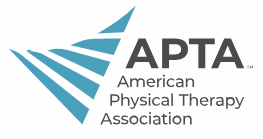The Implementation of Blood Flow Restriction Training Following Patellar Stabilization Surgery: A Case Study
The Implementation of Blood Flow Restriction Training Following Patellar Stabilization Surgery: A Case Study
Purpose: This case study aims to
describe the incorporation of blood flow restriction (BFR) training into a multimodal rehabilitation protocol following patellar stabilization surgery and analyze clinical outcomes on strength, atrophy, and functional status.
Background/Significance: Quadriceps weakness and atrophy are ubiquitous and impactful impairments that are observed following complicated patellar stabilization surgeries. Designing a rehabilitation protocol that emphasizes quadriceps strength and hypertrophy during the early stages of rehabilitation is impracticable due to surgical precautions and impairments that prevent the application of high-load exercise. BFR training coupled with low-load exercise has shown to be effective in increasing strength and hypertrophy in various populations, including patients recovering from knee surgeries. Therefore, the implementation of BFR has the potential to help mediate the quadriceps weakness and atrophy that is expected after patellar stabilization surgery.
Subjects: A 32-year-old female with a history of patellar subluxations and chondromalacia patellae status post-Fulkerson osteotomy and medial patellofemoral ligament repair.
Methods and Materials: The patient was seen in an outpatient physical therapy clinic one-to-two times per week between three and nineteen weeks postoperatively. The BFR phase begun during the ninth week postoperatively, initially coupled with neuromuscular electrical stimulation (NMES) and progressed with low-load exercises beginning week twelve.The outcomes of quadriceps strength measured by handheld dynamometry, thigh circumference measured 6cm and 12cm superior to the patella, and the lower extremity functional scale (LEFS) were collected before, during, and after the implementation of BFR.
Analyses: The clinical outcomes were analyzed to examine changes that occurred in the pre-BFR and BFR phases of rehabilitation. Statistical significance was determined by comparing to the minimally detectable change of the specific measurement and clinical significance was determined by comparing to minimal clinically important differences.
Results: The patient demonstrated an increase in the surgical/uninvolved strength ratio from 23.7% at the beginning of the BFR phase to 97.7% by the end of the BFR phase, which was considered to be statistically and clinically significant. The patient’s 6cm and 12cm suprapatellar thigh girth also displayed statically significant increases of 1cm and 2cm, respectively, during the BFR phase. Clinically significant improvements were observed in the LEFS during both the pre-BFR and BFR phases. Aside from mild discomfort from BFR application, no adverse effects were observed during the course of the patient’s treatment.
Conclusions: The incorporation of BFR into a multimodal rehabilitation program contributed to significant improvements in strength, muscle mass, and functional outcome measure. Clinicians should consider the implementation of BFR with NMES and low-load exercise during early stages of rehabilitation to optimize outcomes following patellar stabilization surgeries.



